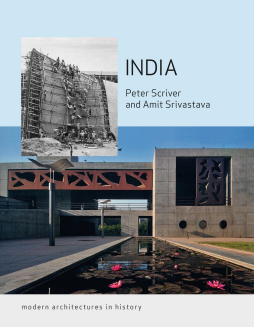
Additional Information
Book Details
Abstract
A place of astonishing contrasts, India is home to some of the world’s most ancient architectures as well as some of its most modern. It was the focus of some of the most important works created by Le Corbusier and Louis Kahn, among other lesser-known masters, and it is regarded by many as one of the key sites of mid-twentieth century architectural design. As Peter Scriver and Amit Srivastava show in this book, however, India’s history of modern architecture began long before the nation’s independence as a modern state in 1947.
Going back to the nineteenth century, Scriver and Srivastava look at the beginnings of modernism in colonial India and the ways that public works and patronage fostered new design practices that directly challenged the social order and values invested in the building traditions of the past. They then trace how India’s architecture embodies the dramatic shifts in Indian society and culture during the last century. Making sense of a broad range of sources, from private papers and photographic collections to the extensive records of the Indian Public Works Department, they provide the most rounded account of modern architecture in India that has yet been available.
“Scriver and Srivastava have produced the definitive analysis of the long trajectory of modern architecture in India, from its naissance in the colonial world to the present, when its fate hangs in the balance. Written in an assured, fluent style, the book weaves together a wealth of detailed information into a narrative that is simultaneously highly readable and scholarly. An essential text for all those interested in the past and future of contemporary Indian architecture.”
— Vikramaditya Prakash, Professor of Architecture, University of Washington, author of Chandigarh’s Le Corbusier and coauthor of A Global History of Architecture
Peter Sriver and Amit Srivastava are senior researchers in the Centre for Asian and Middle-Eastern Architecture at the University of Adelaide, Australia, where they also lecture in architectural history, theory, and design. Both are authors of several previous books about architecture in India.
Table of Contents
| Section Title | Page | Action | Price |
|---|---|---|---|
| Cover | Cover | ||
| India: Modern Architectures in History | 3 | ||
| Imprint Page | 4 | ||
| Contents | 5 | ||
| Introduction | 7 | ||
| One: Rationalization: The Call to Order, 1855–1900 | 23 | ||
| Two: Complicity and Contradiction in the Colonial Twilight, 1901–1947 | 71 | ||
| Three: Nation Building: Architecture in the Service of the Postcolonial State, 1947–1960s | 127 | ||
| Four: Regionalism, Institution Building and the Modern Indian Elite, 1950s–1970s | 171 | ||
| Five: Development and Dissent: The Critical Turn, 1960s–1980s | 223 | ||
| Six: Identity and Difference: The Cultural Turn, 1980s–1990s | 271 | ||
| Seven: Towards the ‘Non-modern’: Architecture and Global India since 1990 | 311 | ||
| References | 340 | ||
| Select Bibliography | 368 | ||
| Acknowledgements | 370 | ||
| Photo Acknowledgements | 372 | ||
| Index | 374 |
